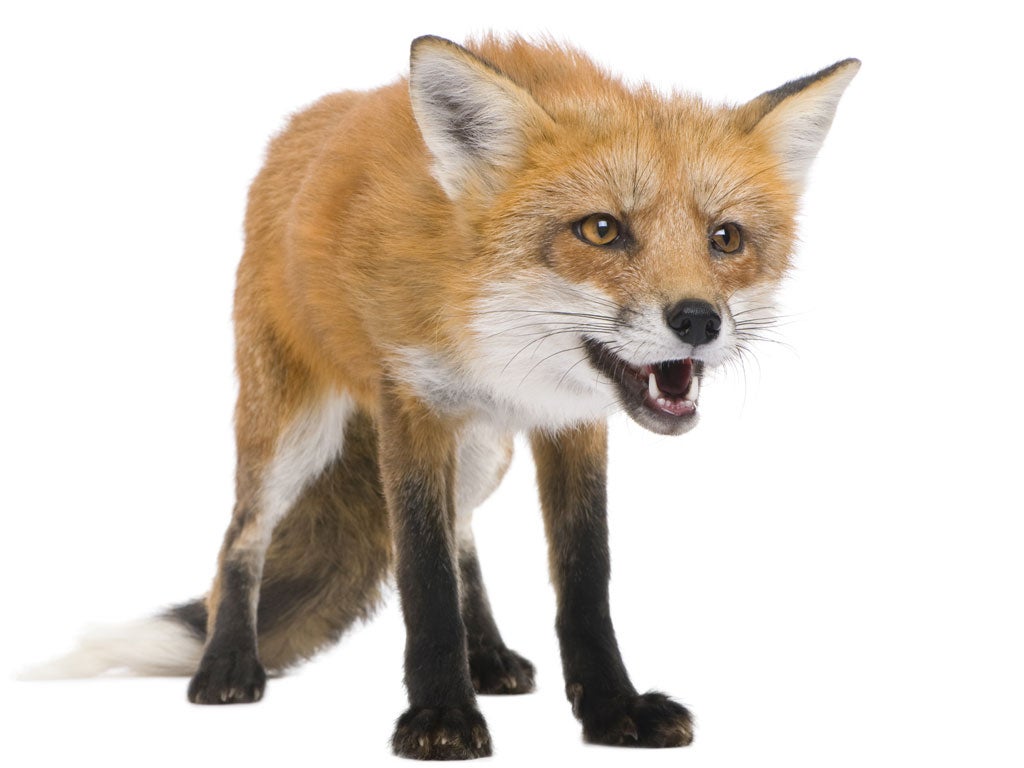Tally ho! Everything you need to know about urban foxes
As the biggest national survey begins on Channel 4 tomorrow, Sarah Morrison separates reality from myth

Foxes are the animal kingdom's answer to Marmite – you either love them or hate them. And yet, with an estimated 27 foxes per square mile in some of our cities, it is no simple task to avoid them. Whether you want to feed them or flee from them, Channel 4 will make your life easier tomorrow when it launches what it hopes will be the biggest nationwide study of urban foxes in the UK.
Foxes Live: Wild in the City will be broadcast from London's Battersea Power Station over three nights, branding itself as a "natural history event" gone "interactive". With GPS tags, foxes carrying mini cameras, CCTV and the help of viewers, the programme aims to give a "fox-eye view of our cities". There are said to be up to 40,000 foxes in urban areas and more than 200,000 in the countryside.
The show, which is hosted by Mark Evans, from Channel 4's Inside Nature's Giants, and Anita Rani, of Four Rooms, will use night-vision cameras to film inside fox dens – just at the time of year when cubs start to emerge. Viewers will be able to follow the route of tracked foxes, from where they sleep to where they mate.
In what David Dugan, the show's executive producer, called a "public call to action", the broadcast will be accompanied by a website that enables viewers to map where they have seen foxes, generating Britain's first "fox census".
The Independent on Sunday brings you 10 facts you never knew about the animal that roams your streets...
They come in a range of colours
Most of the country's foxes are red in colour, but black and silver foxes are occasionally spotted in the UK. Foxes with white patches are relatively common.
They're smaller than you think
While fox spotters might describe the animal as being "as big as an Alsatian", an average fox in Britain is only a little bigger than a pet cat. The average weight for female foxes is 5.5kg (12lb) – equivalent to the weight of a three-month-old human baby. Males are only slightly bigger, at 6.5kg. Foxes' weight tends to increase the further north they are found.
They don't have 2.4 pups
Foxes live in complicated family groups. Older siblings or an aunt will often step in to care for new cubs. Individual cubs in one litter regularly have different fathers.
That post-coital glow goes on and on
After foxes mate, they can stay physically attached in a sexual position for up to an hour. This is known as the "copulatory tie", and occurs in other members of the canid family, including dogs, wolves and coyotes – all species that can be "locked" together after mating. A male and female fox usually pair for life.
They can leap small buildings at a single bound
Foxes can easily scale a 6ft fence. The small, slender bodies of red foxes are designed for speed and agility. They have longer legs and smaller stomachs than most other members of the canid family.
They know where you live... And where they live, too
For those who do not like the sight, sound or, indeed, smell of a fox in their back garden, moving them on is not always the humane option. Foxes that are moved have low survival rates; such territorial creatures often travel back to their old neighbourhoods. A fox that is moved 35 miles away can return home in 12 days.
No town and country divide
While the common myth prevails that urban foxes and rural foxes are different species, this is not true. Urban foxes often move out of towns to live in nearby rural areas, and country animals often move to the city. So not only are urban and rural foxes the same species, they may well be the very same animals.
They don't understand the Green Cross Code
It is estimated that 100,000 foxes are killed by road traffic every year – perhaps the single most important cause of death for foxes in Britain.
They prefer a better class of neighbourhood
Foxes started to colonise cities in the 1930s when the building of low-density housing started. With the change in housing policy came the rise of semi-detached suburbia, with spacious gardens, providing an ideal habitat for foxes. Today, they are still most common in suburbs built in this period.
Stuff your wheelie bin!
They don't need your leftovers. Far from being picky eaters, urban foxes eat anything and can adapt to eat anything they can find. They can live on a diet of insects and berries but they also eat small animals and birds.
Join our commenting forum
Join thought-provoking conversations, follow other Independent readers and see their replies
Comments
Bookmark popover
Removed from bookmarks